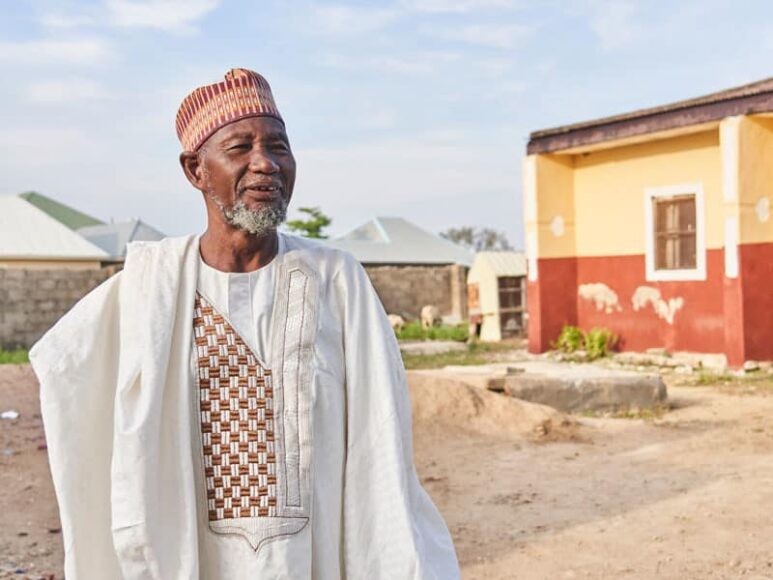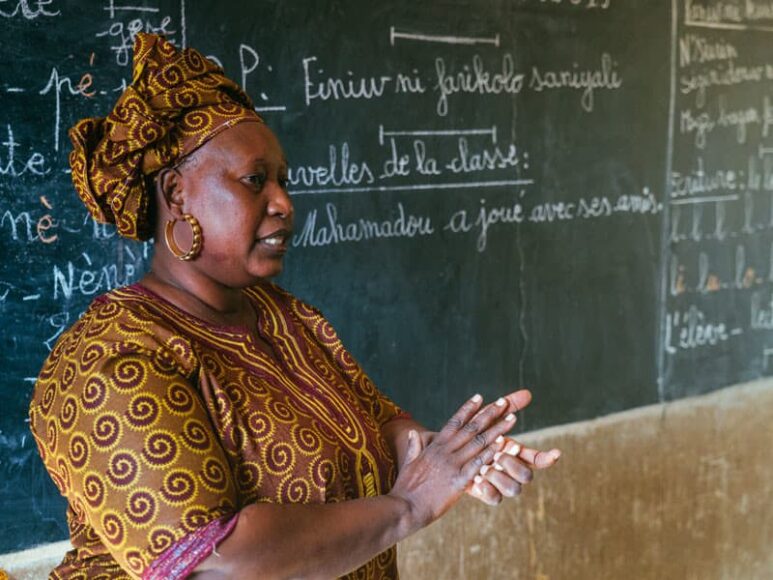During the past 60 years, several developing countries embarked on the path toward economic self-reliance. Not all of them succeeded in achieving the positive change they aspired to. So how far have we come? Although progress has been made, it has been slow. There is much more left to be done.
Self-reliance is not a new concept in development — it has existed for some time under different names, including economic independence, self-sufficiency, the way forward, relying on local resources, etc. Regardless of the name, these concepts pointed toward one goal: countries framing their own developmental strategy and achieving it in their own way and at their own pace. At the end of this journey to self-reliance, nations would be able to stand on their own with little or no government-to-government development support. Along the way, local and international resources would be mobilized to lead swift and tangible economic and social progress.
Reflecting on the journey to self-reliance in Sub-Saharan Africa in particular, many countries have been challenged to set their own course and stay on it. It’s also clear that the journey to self-reliance can’t be done solo; it requires reliable travel companions.

Developing countries charting their own path
Achieving self-reliance requires homegrown developmental strategies that build strong economies, efficient institutions, highly skilled human resource assets and robust and inclusive financial systems. Governments need strong political will and discipline to carry out these strategies. However, many countries glossed over their own developmental needs and instead copied other models without giving due consideration to the local dynamics. During the Cold War, for example, Ethiopia adapted the former Soviet Union’s model of economic development following the military takeover of 1974. The nationalization of the private sector brought the economy into complete chaos, the manufacturing and service sector in particular.
To succeed in becoming self-reliant, countries need to engage as many stakeholders as possible and tap into local resources, including the public and private sector, local communities, regional and international partners, small and large business enterprises, local CSOs, etc. However, we have seen several countries promote state-led developmental schemes at the expense of the private sector and other stakeholders. There has been a price to pay for this as well. Eritrea, Guinea Bissau and Mozambique, for example, opted for state-led economies following decades of war for independence. The result is stalled economies or regression.
As much as countries should promote and encourage the private sector, there are pitfalls to focusing only on capital creation and accumulation and disregarding the wealth gap that this economic policy could create. We see wealth inequality common in much of Sub-Saharan Africa. Nigeria, for example, is a rich oil-producing country that had 112 million people living in poverty in 2010, according to Oxfam. Over 130 million people are without access to adequate sanitation, 57 million lack access to safe water, and the country has the highest number of out of school children in the world. Oxfam found that poverty and inequality in Nigeria are not due to lack of resources but to the ill use, misallocation and misappropriation of resources. Paths toward self-reliance should not prioritize the private sector gains over the wellbeing of the population.
Countries should aim to ensure no one is left behind as they advance toward self-reliance and remain responsive to the needs of youth, women and other marginalized groups. According to the Brookings Institution, the youth unemployment rate is above 20 percent in Ghana and Zimbabwe, above 30 percent in Botswana and Mauritius, and above even 60 percent in South Africa. This phenomenon could have severe consequences on the stability of these countries as unemployed youth are more vulnerable to join extremist political movements or migrate, denying a country its human resource assets. Responding to this challenge requires an investment in social and economic programs that support the wellbeing of youth, women and other marginalized groups and create an opportunity for them to demonstrate their value to their communities and nations.

Strong and efficient public institutions and private sector entities that practice accountability and transparency and root out corruption are also crucial for the journey to self-reliance. This requires strong regulation, rule of law and good governance that allows people the right to freely express their views, organize, vote without fear of persecution and other civil liberties. Several countries have struggled to build well-functioning institutions or civil service and to fight corruption. According to the Mo Ibrahim Foundation, 34 countries have improved their governance performance over the last 10 years, but 18 countries’ scores have declined.
Of course, one of the biggest obstacles on the journey to self-reliance is destabilization and conflict. According to the Polity IV database, Africa is still home to at least 11 fully autocratic regimes. Three African heads of state have been in power since the 1970s, and five since the 1980s. Since 1996, 11 countries have been embroiled in civil wars. According to the 2020 Global Peace Index, Sub-Saharan Africa registered a slight fall in peacefulness, and the level of peacefulness deteriorated in 24 countries. This decline is characterized by civil unrest and violent protests that broke out in many countries over the past year, which can be attributed to disputes over election results and demands for political change.
In fragile states in particular, grassroots development programs that are contextualized and responsive can build community resilience and mitigate the effects of disaster and conflict.
Supporting players in the journey to self-reliance
While each country must chart its own course, the journey to self-reliance still requires travel companions along the way.
Technology, for example, can help countries find cutting-edge innovations to support their development agenda. Rwanda is utilizing drones to distribute medicine to the rural areas. Mobile money can replace traditional transaction systems to facilitate the smooth trade domestically, regionally and internationally. Expanding internet access can connect people with information. Mobile internet adoption currently stands at 24 percent in Sub-Saharan Africa, which accounts for 40 percent of the global population not covered by a mobile broadband network. Bridging the connectivity gap will require more work, investment and political will.
Building self-reliance calls for regional collaboration and economic integration. It demands the formation of a common front to address the world’s most pressing problems. It should encourage the free flow of people from one country to the other. Pandemics such as COVID-19 and Ebola, climate change and the fight against violent extremism have demonstrated the dire need for regional collaboration.
In all of this, international partners have a role to play not as drivers of self-reliance but as equal partners.

This approach is effective when several partners jointly lay a foundation based on shared values and vision, where both parties define their strategic developmental objectives and ways of attaining them. This type of reciprocal partnership allows each side to strengthen and complement the other, doing away with the traditional donor-recipient relationship. This is a process of economic empowerment that relies on trust, confidence, the solidarity of vision and approach, and acknowledgment of mutual contribution to a common endeavor.
International partners should have the courtesy to look at the national or local agenda closely and appreciate, respect and encourage homegrown solutions and local ownership. Self-reliance isn’t attainable when international partners create dependency.
However, international partners can be instrumental in supporting the journey to self-reliance by working with developing countries to frame their development agendas and supporting informed decision-making processes based on data and best practices.
International partners have the economic and political advantage to facilitate the exchange of these best practices and promote cooperation, trade and investment. The Comparative International Education Society (CIES) is one example. It provided a forum for the exchange of best practice in international education. The World Economic Forum is also a forum of unconventional multilateralism that recognizes international corporations and other non-state players on par with states. The forum has established a reputation as an independent entity that can provide a flexible and neutral platform for promoting global collaboration and partnership. The trade hubs set up by some bi-lateral and multi-lateral funding agencies aim to incentive trade and investment and strengthen the private sector.
The 2030 Agenda for Sustainable Development, adopted by all United Nations member states in 2015, also provides a shared blueprint for peace and prosperity for people and the planet, now and into the future.
Many countries around the world have started their journey to self-reliance. By setting their own goals, making a commitment to them and enlisting the support of regional and international partners, they can continue to move forward.
Semere Solomon is a Senior Director with the Africa Center at Creative Associates International.